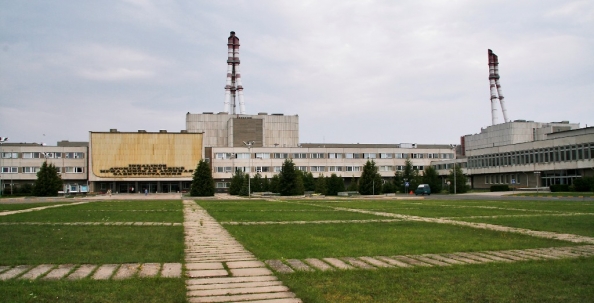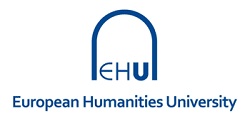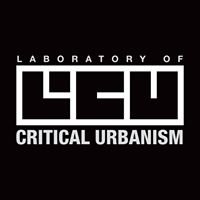


Summer School:Mapping Visaginas: Re‐tooling Knowledge Infrastructures in a ‘Post‐Nuclear’ Town Organization: Laboratory of Critical Urbanism, European Humanities University
Date & Place: 18‐31.8 2018, Vilnius and Visaginas, Lithuania
Target group:Students in urban studies, sociology, geography, political science, architecture, design, urban planning, history, cultural studies, anthropology and heritage studies from Germany, Lithuania, Belarus and beyond
Language: English is the common working language. Some knowledge of Lithuanian and/or Russian will be helpful.
Workload per week: 15 h lectures and seminars, 10 h group work, 5 h individual work
Certificate: 5 ECTS certificate will be provided after handing in a final paper
Application: CV (1 page), Letter of Intent (1 page), Recommendation Letter
Fee:Participants from German institutions 850 €, Participants from Lithuanian and Belarusian institutions 60 €, Others 300 €
Costs covered: Study materials, accommodation in hostel / flats in Visaginas and Vilnius, joint breakfasts, lunches & dinners in Visaginas, excursions in Vilnius
Scholarships: DAAD provides 8 GoEast scholarships for German participants
Support: German Academic Exchange Service was asked for support
Info & Contact: www.criticalurbanism.org, Dr. Benjamin Cope: urbanism@ehu.lt
Deadline:31.5.2018
This project is a continuation of the long‐term work of the Laboratory of Critical Urbanism (European Humanities University, Vilnius) on the urban transformations of Visaginas, a former ‘nuclear’ town in eastern Lithuania. LCU has already organized three DAAD Summer Schools exploring the town and elaborating scenarios for its future development (2015, 2016 and 2017), and in 2016 published the book Mapping Visaginas. Sources of Urbanity in a Former Mono‐functional Town (Vilnius Academy of Arts Press). These activities have led to a fruitful cooperation with local government, and public and private institutions, as well aswith active community members. The focus of the 2018 Summer School is the elaboration of a new concept for Visaginas public library both as institution and as infrastructure, in its connection to other institutions and infrastructures of the town. The Summer School’s working formats are lectures, seminars, workshops and supervised fieldwork. It is open to students of urban studies, sociology, geography, political science, architecture, design, urban planning, history, cultural studies, anthropology, and heritage studies with a strong interest in problem‐based interdisciplinary research work.
Visaginas today is a specific case of urban transformation, where the loss of the town’s identity is caused not only by the disappearance of the town’s sole industry (due to the closure of the Ignalina Nuclear Power Plant in 2009), but also by the disruption of the town’s position within a wider set of knowledge infrastructures. Visaginas was built from scratch in Soviet Lithuania in the 1970s and 1980s as one of the locations in a technological and professional network, created by the USSR nuclear ministry, euphemistically termed the Ministry of Medium Machine Building. As satellite town of the Ignalina Nuclear Power Plant, it was, together with Leningrad, Chernobyl and Smolensk, one of the four nodes of the USSR’s North‐West United Power System. This USSR - wide ministry network implied an exceptional mode of urbanization. It was characterized by constant, centrally planned technology, research and workforce exchange between its different locations; by technocratically governed and disciplined settlements (the towns and power plants were governed as a unit, with the governing bodies composed mainly of nuclear scientists and engineers); as well as by a high quality of housing, public buildings, welfare provision, commodity availability and a high level of integration with nature. Both INPP and Visaginas were almost impenetrable exclaves for the local Lithuanian population and institutions: until 1991 they belonged to the Ministry of Medium Machine Building and not to the Lithuanian Soviet Socialist Republic. In this vein, the INPP was the sole source of the production and control of meanings of what the town is for in the context of the USSR, whose Cold War period influence on the globe was largely enabled by nuclear technology. Thus, the INPP was not just the only source of jobs and revenue, but also was central to the town’s knowledge infrastructure, i.e. a “robust network of people, artifacts and institutions that generate, share, and maintain specific knowledge about the human and natural worlds” (Edwards, 2010).
Since the closure of the INPP, Visaginas is generally regarded through a conventional lens of de-industrialization. This lens needs to be widened and further refined. On the one hand, from the late 1980s hostility to a locally unaccountable INPP was a central factor in practices and discourses aimed at regaining Lithuanian state sovereignty. These events indicate how Visaginas was not simply a locus of industrial production: in this town, techniques of production were and are imbricated in wider geopolitical configurations. On the other hand, the ‘post‐nuclear’ town of Visaginas has soon become a dull theme, reduced to a notion of a post‐Soviet rupture that has happened once and forever. However, the question remains as to whether, from the perspective of urban scale processes, the decommissioning of nuclear technology should be termed de‐industrialization. Firstly, the work of the nuclear industry, based primarily on control and surveillance rather than production line manufacture, itself asks a question of how labour relates to science.
Second, it will take a lot of time and skilled efforts to dismantle the technology – in the case of INPP, this work is expected to be done by 2038 only and requires around 2000 relatively well paid jobs. And thirdly, some types of nuclear waste require thousands of years of professional management. For the social sciences and urban planning, this provokes a need for a thorough understanding and deliberate reconfiguration of industry-city‐community relations beyond the rupture ‘before/after industry closure’, and therefore beyond conventional approaches in studies of de-industrialization. The dilemmas currently facing Visaginas, most actively discussed by the town’s community and governance structures, are mainly about the town’s new identity and economic specializations. In essence, this concerns the destruction of the hermetic relations between the town and the INPP, and the creation and strengthening of new, town‐oriented governance and production structures. Although INPP will remain a crucial techno-political factor for many years ahead, it is becoming less central in giving sense both to life in town, and to the town’s relations to the outside. In this respect, LCU’s project argues that a crucial dimension of the current transformation is the development of new knowledge infrastructures in the town. This dimension unfolds as addressing the question: via which combinations of artifacts, formats, institutions and spaces will the Visaginas community publicly produce knowledge for and about itself in the course of the transforming of its ties with the INPP, and its reconfiguration as a municipal unit within the Lithuanian nation state.
The Summer School’s projects are expected to produce and discuss formats to generate, organize and represent knowledge about different aspects of Visaginas as a still transforming former USSR Ministry of Medium Machine Building town, but with INPP as no longer its sole purpose‐giving factor. The summer school will focus on Visaginas public library as one of the crucial institutions, where a new patterning of producing knowledge about the town can be publicly developed. Framing the library as a knowledge infrastructure, and not just as an archive, or as a service provider, is promising especially today when, under the influence of digital innovation, changes of relations between actors, artifacts, technologies, institutions and resulting knowledge are quick and profound. The effects of these changes are only slowly being comprehended and experimentally addressed in urban planning and design. In this context, libraries often turn out to be institutions that are at the forefront of such design experimentations. Grounding this experimentation in urban‐scale specific processes provides instruments to work with the ‘knowledge society’ notion as localized, i.e. through exploring how local layers of infrastructures for producing, ordering and disseminating knowledge relate to those that existed previously.

